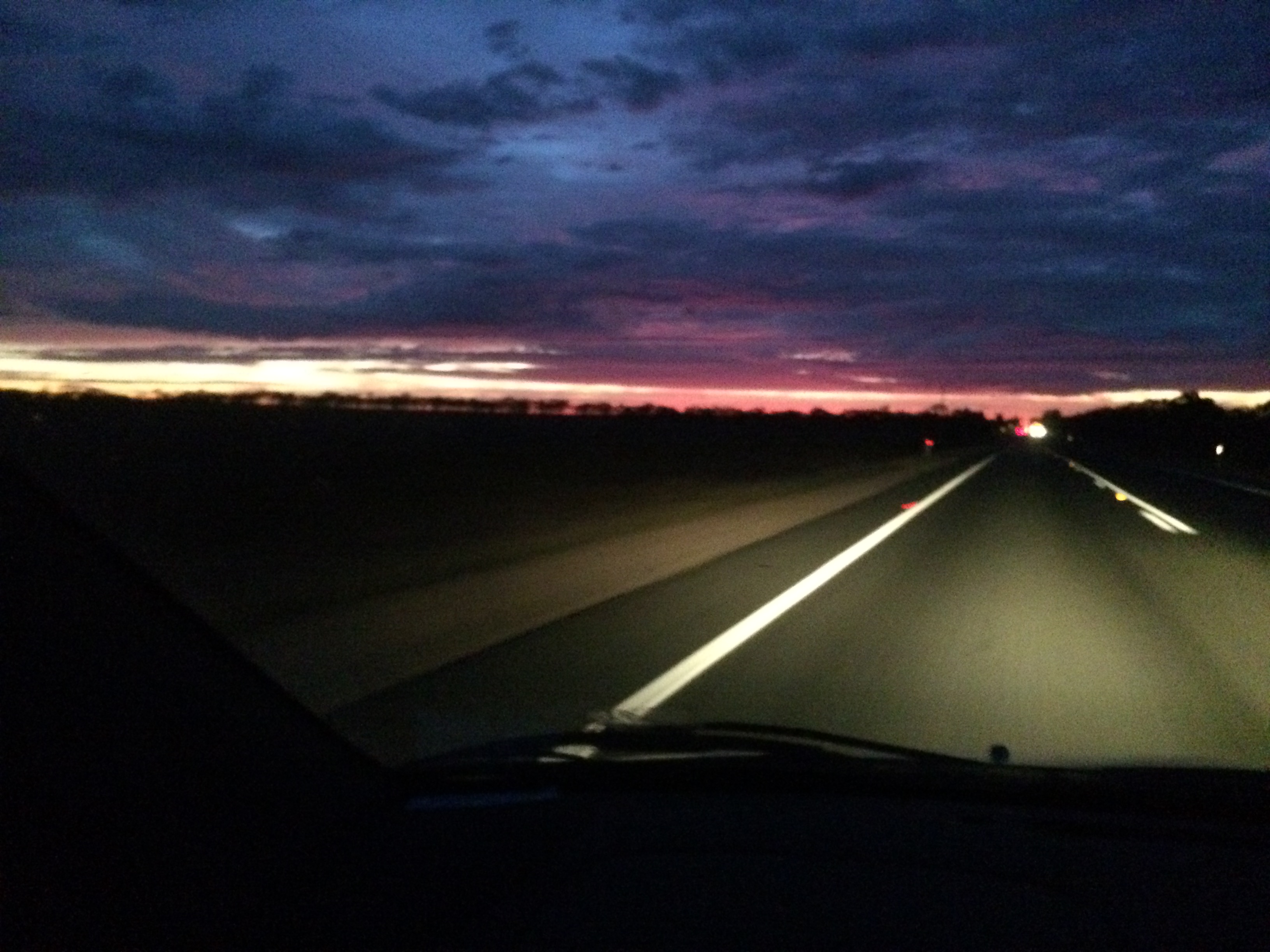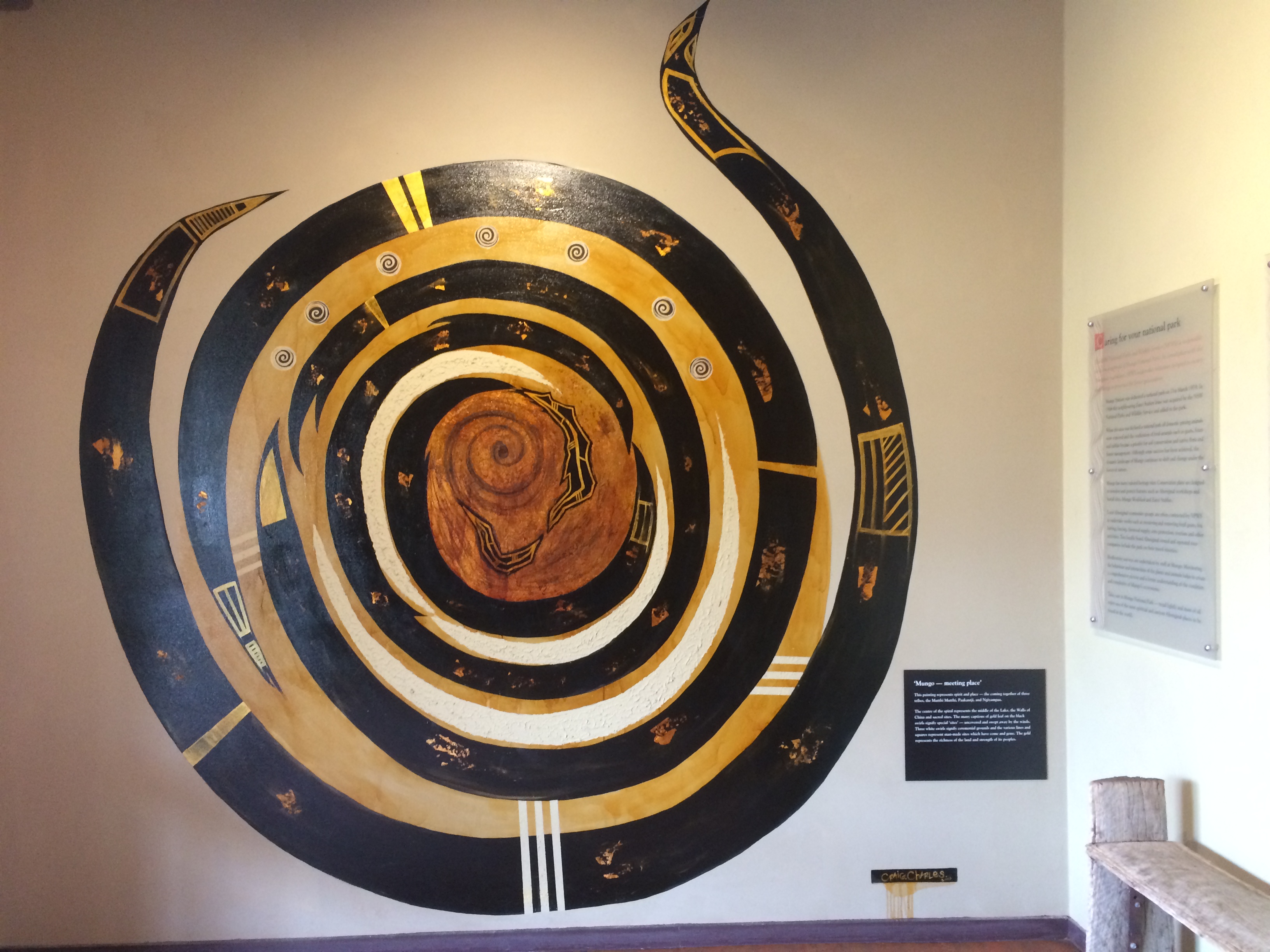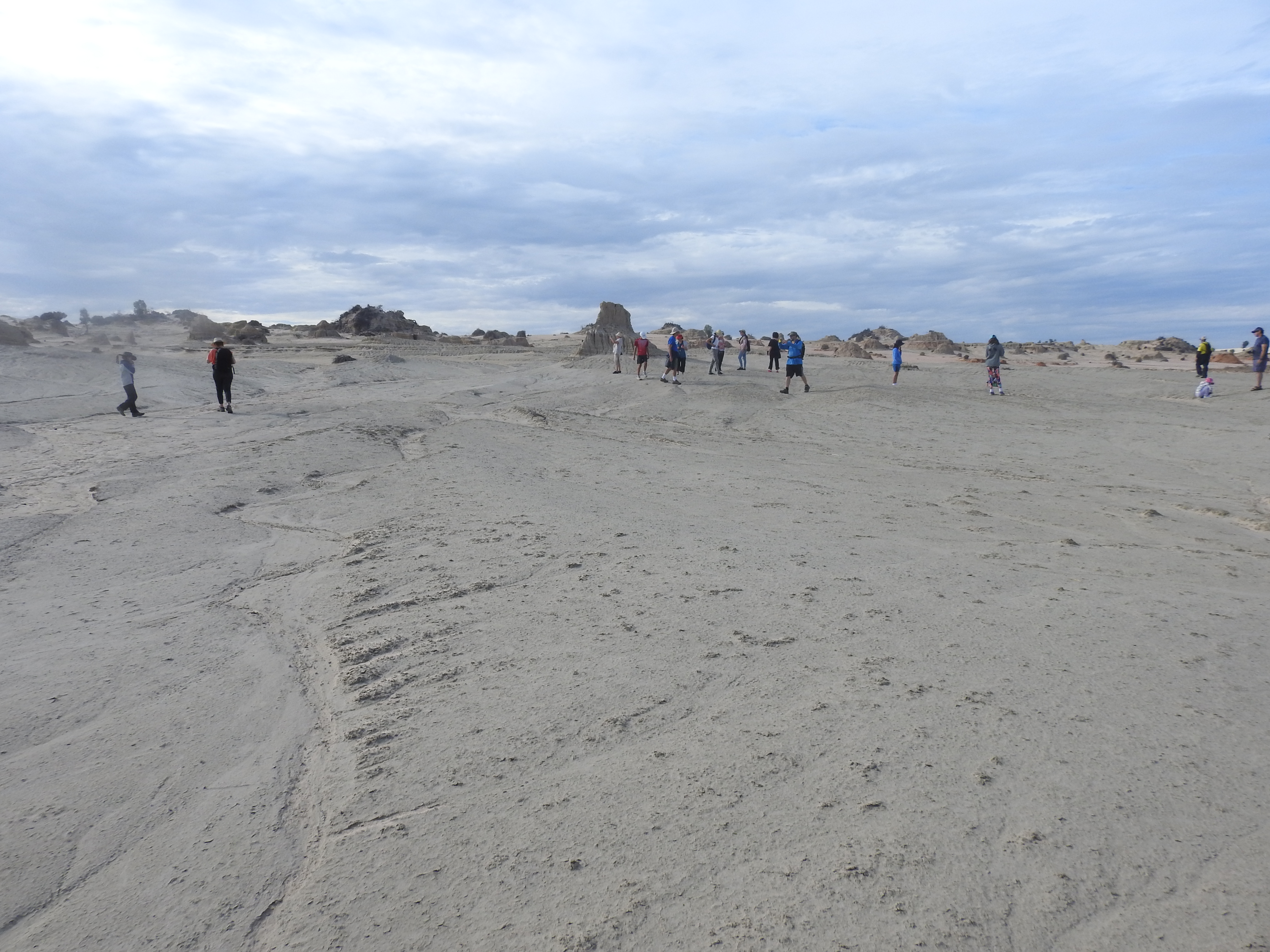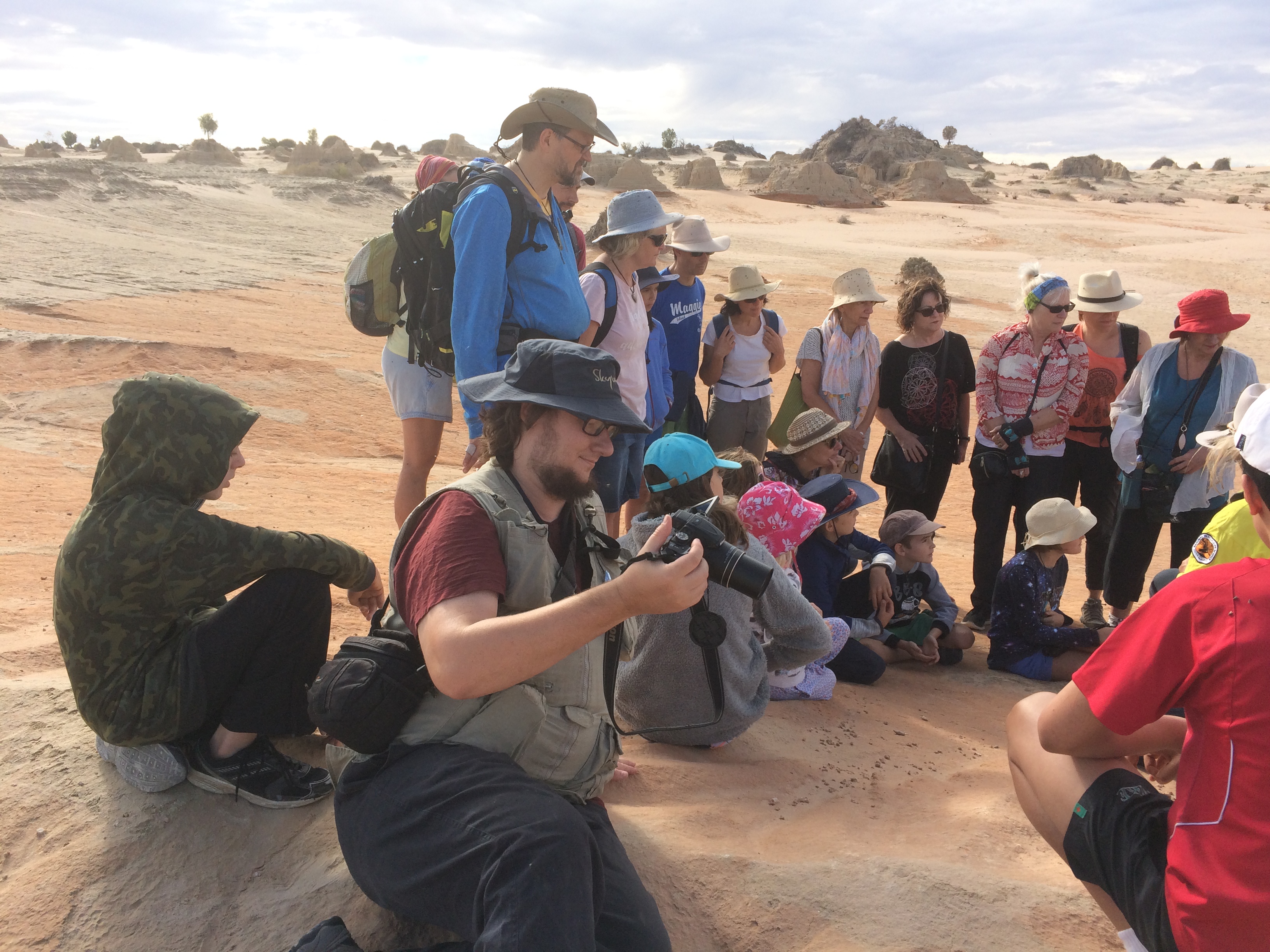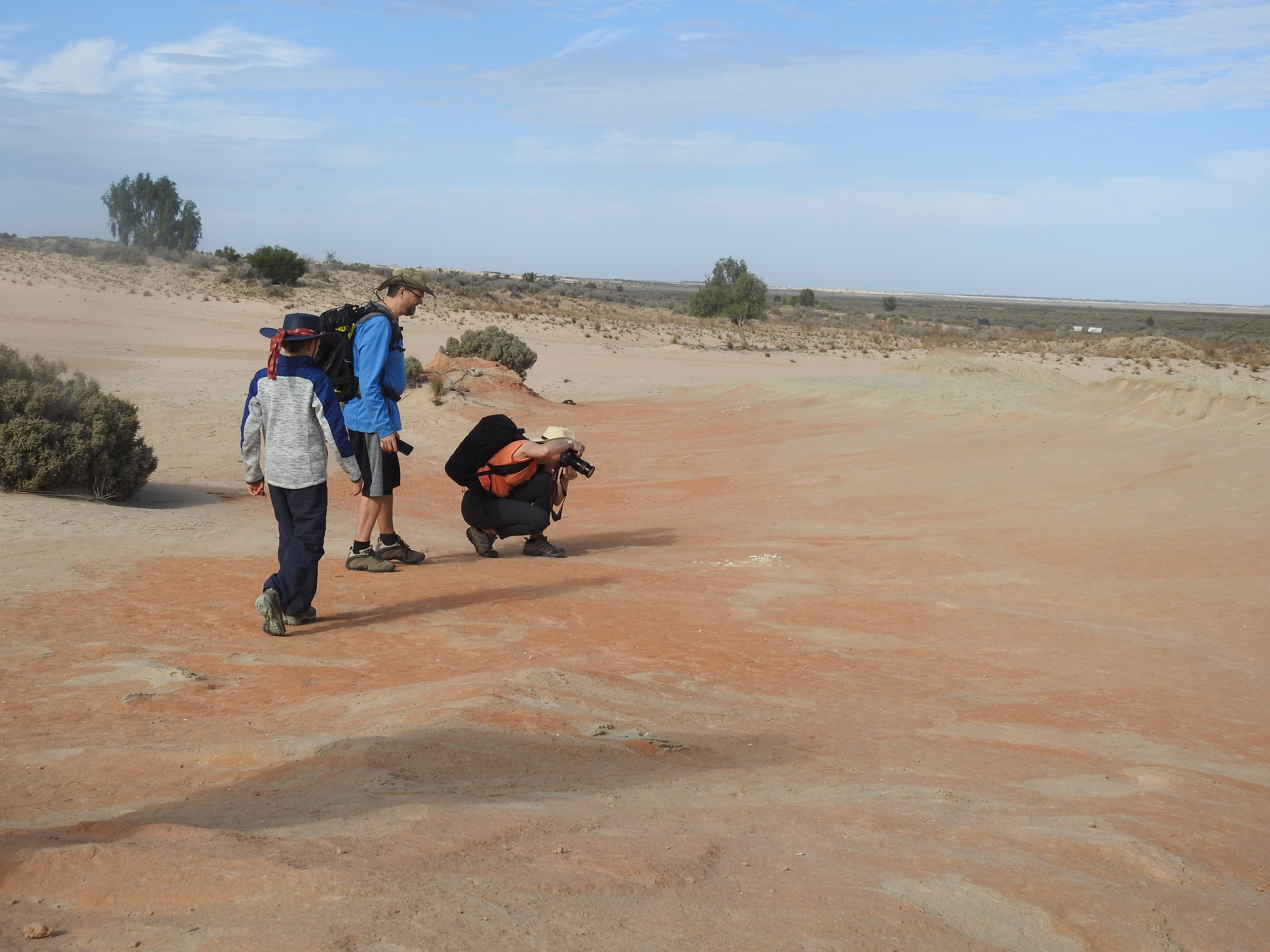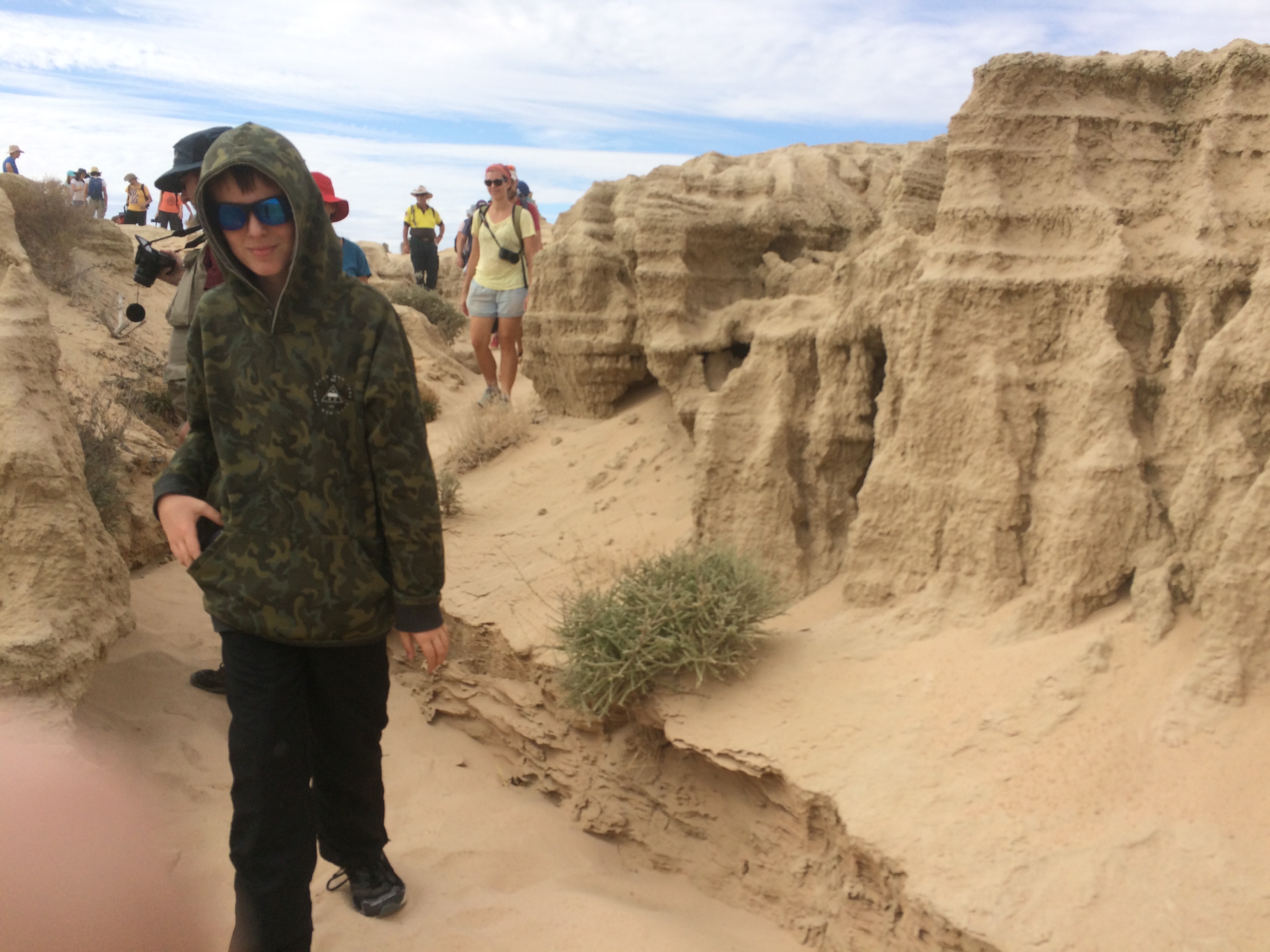We had wanted to see Lake Mungo in western New South Wales – famous for Aboriginal history and palaeozoology – for many years.
An early start from Adelaide and a very sleepy look at Australia’s largest river- the Murray
By the time we got close to Lake Mungo it was obvious we were now truly in the outback, especially the last 60km or so along a bumpy dusty road with saltbush and other semi-arid shrubs to either side.
Lake Mungo
Well, it used to be a lake, until about 20,000 years ago, when it rapidly dried out. You can still clearly see the ancient sand dunes along the edge (even from the air – I saw them on a flight to Adelaide earlier in the year).
Before then it was alive with active Aboriginal communities as well as diprotodons and other now-extinct megafauna (and some not so mega). 20,000-year-old human footprints surprised and intrigued researchers and others. There was even more surprise when the remains of Aboriginal people found there (especially Mungo Man and Mungo Lady) which proved to be 40 – 45 thousand years, and decorated to suggest a ritual burial. Two surprises here – first that humans had been in Australia for such a long time (recent discoveries elsewhere have now suggested over 60,000 years) and secondly that ritual burial had such a long history.
The remains of Mungo Man have recently been returned to his home country of Lake Mungo.
20,000 years ago saw an episode of climate change causing Australia to become colder, drier and windier, gradually drying up the lake
Read more here about Lake Mungo’s history
In the museum at Lake Mungo
Scenes from Lake Mungo
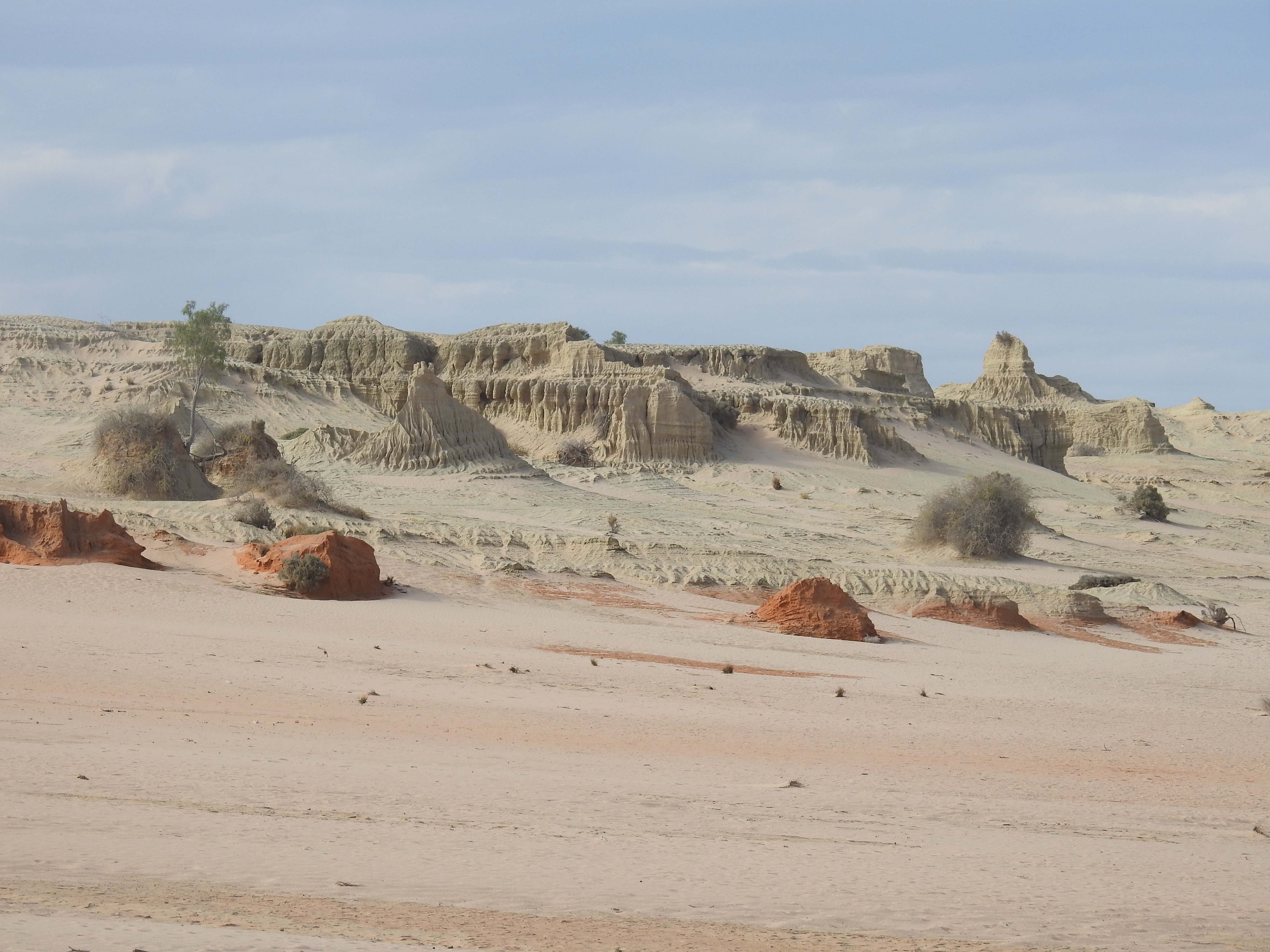
Next: on to Parkes and Dubbo …

